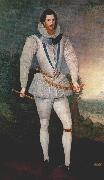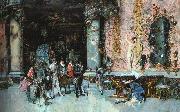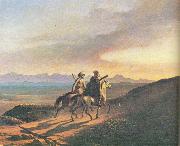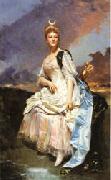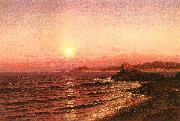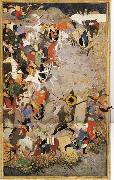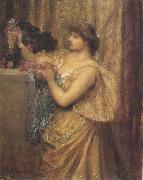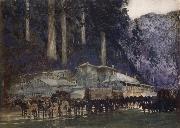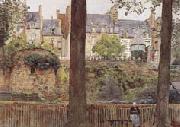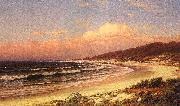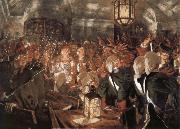|
|
|
|
|
|
|
|
 |
Nikolai Yaroshenko
|
|
(Ukrainian: Mykola Oleksandrovych Yaroshenko; Russian: December 13 [O.S. Dec. 1] 1846 in Poltava - July 7 [O.S. June 25] 1898 in Kislovodsk) was a Russian painter of Ukrainian origin.
Nikolai Alexandrovich Yaroshenko was born on December 13 [O.S. Dec. 1] 1846 in the city of Poltava, Russian Empire (now in Ukraine) to a son of a Russian Army officer. He chose a military career, but also studied art at Kramskoi's drawing school and at the Saint Petersburg Imperial Academy of Arts.
In 1876, he became a leading member of a group of Russian painters called the Peredvizhniki (also known as the Itinerants). |
|
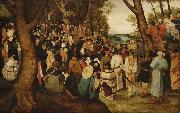 |
Pieter Brueghel the Younger
|
|
(1564 or 1565 - 10 October 1636) was a Flemish painter, known for numerous copies after his father Pieter Brueghel the Elder's paintings and nicknamed "Hell Brueghel" for his fantastic treatments of fire and grotesque imagery.
Pieter Brueghel the Younger was the oldest son of the famous sixteenth-century Netherlandish painter Pieter Brueghel the Elder (known as "Peasant Brueghel") and Mayken Coecke van Aelst. His father died in 1569, when Pieter the younger was only five years old. Then, following the death of his mother in 1578, Pieter, along with his brother Jan Brueghel the Elder ("Velvet Brueghel") and sister Marie, went to live with their grandmother Mayken Verhulst (widow of Pieter Coecke van Aelst). She was an artist in her own right, and according to Carel van Mander, possibly the first teacher of the two sons. The family moved to Antwerp sometime after 1578 and Pieter possibly entered the studio of the landscape painter Gillis van Coninxloo (1544 - 1607). In the 1584/1585 registers of Guild of Saint Luke, "Peeter Brugel" is listed as an independent master. On 5 November 1588 he married Elisabeth Goddelet, and the couple had seven children.
He painted landscapes, religious subjects and fantasy paintings. For this last category he often made use of fire and grotesque figures, leading to his nickname "Hell Brueghel".
Apart from these paintings of his own invention, Pieter Brueghel the Younger also copied the works his father had created by using a technique called pouncing. His genre paintings of peasants lack Pieter the Elder's subtlety and humanism, and emphasize the picturesque
|
|
|
|
|
|
|
|
|
|
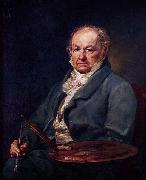 |
Vicente Lopez y Portana
|
|
(September 19, 1772, Valencia, Spain CJuly 22, 1850, Madrid, Spain) was a Spanish painter, considered the best portrait painter of his time.
Vicente Lepez y Portaña was born in Valencia on September 19, 1772. His parents were Cristebal Lepez Sanchordi and Manuela Portaña Meer. Vicente Lepez began formally studying painting in Valencia at the age of thirteen, he was a disciple of father Antonio de Villanueva, a Franciscan monk, and he studied at the Academy of San Carlos in his native city. He was seventeen when he won first prize in drawing and coloring receiving a scholarship to study in the prestigious Academia Real de Bellas Artes de San Fernando in Madrid. For the following three years in Madrid, he apprenticed with the Valencian painter, Mariano Salvador Maella. Vicente Lepez returned to Valencia in 1794 and subsequently became vice-director of painting at the Academy where he had studied as a boy. In 1795 he married Maria Piquer, they had two sons: Bernardo Lepez Piquer and Luis (1802-1865), who were also painters, following their father's style but with little accomplishments. In 1801 Lepez was named President of the Academy of San Carlos. |
|
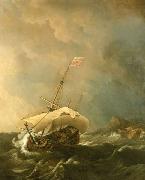 |
Willem Van de Velde The Younger
|
|
(bapt. 18 December 1633 - 6 April 1707) was a Dutch marine painter.
Willem van de Velde was baptised on 18 December 1633 in Leiden, Holland, Dutch Republic.
A son of Willem van de Velde the Elder, also a painter of sea-pieces, Willem van de Velde, the younger, was instructed by his father, and afterwards by Simon de Vlieger, a marine painter of repute at the time, and had achieved great celebrity by his art before he came to London. In 1673 he moved to England, where he was engaged by Charles II, at a salary of £100, to aid his father in "taking and making draughts of sea-fights", his part of the work being to reproduce in color the drawings of the elder van de Velde. He was also patronized by the Duke of York and by various members of the nobility.
He died on 6 April 1707 in London, England. |
|
|
|
|
|
 |
William Yates
|
|
painted Fisherman on the River Bank in 19th Century
|
|
|
|
|
|
|
|
|
|
|







